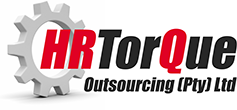Author: Delene Sheasby (www.worksafetysa.co.za)
Editor’s note: Delene is a registered health and safety management consultant. Should you need assistance with your workplace safety compliance chat to one of the team today.
Artificial intelligence (AI) has an amazing ability to examine thousands of datapoints and figure out patterns. This can help us predict and prevent potential health and safety problems or accidents before it is too late.
A significant way AI helps is through predictive analytics. Predictive analytics is like having a crystal ball for workplace safety and is a smart way of using data to foresee potential issues before they happen. Of course, a human can do the same, but we will take much longer. By looking at past data, AI observes trends and spots areas where accidents might occur, helping organisations take action as soon as possible. For example, in workplaces with large machinery, AI can analyse data to know when equipment needs fixing, so there is less chance of it breaking unexpectedly and causing problems down the line.
Another advantage of AI is real-time monitoring. This means it provides immediate awareness, thereby improving emergency response times, maintaining continuous vigilance, offering behavioural insights, acting as a deterrent, and enabling data-driven decision-making – all contributing to a safer and more secure workplace. By using sensors and cameras, AI keeps an eye on what is happening in the workplace all the time. If something unusual comes up, such as someone not following safety rules, AI can be used to send out an alert. This quick response helps to keep people safe, prevent accidents before they happen and minimise any potential harm.
AI can also be used to assess risks. It looks at potential risk factors such as the environment, how people work, and the condition of equipment. Then, it creates a profile of possible risks, helping companies make specific safety plans tailored to their unique situations. It is an essential tool for safety officers when preparing their risk assessments.
However, here’s the key – AI works best when it teams up with people. While it is great at crunching numbers, humans are needed to bring in their experience and know-how. It is a bit like having a smart assistant – together people and AI are the ultimate dream team in making sure everyone stays safe.
Embracing AI isn’t about replacing humans; rather, it is about staying ahead in the race for progress. While AI won’t replace people, those who harness its full potential will inevitably outpace those who don’t. It is not a matter of substitution but rather a matter of evolution. Individuals and organisations that integrate and leverage AI effectively will surpass those who lag behind in adopting this technology. The key lies not in AI replacing humans but in humans using AI to their advantage and, in doing so, surpassing those who resist its integration.

